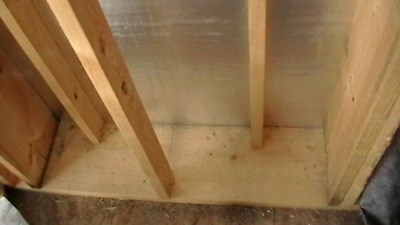Research recently published by Kameal Mina, professor and program co-ordinator for the Energy Systems Technology program at Cambrian College, proves a building’s conductive heat loss can be reduced by using an alternative construction technique.
Traditionally, buildings have been constructed with wooden frames that are supported by parallel studs, stated a press release from Cambrian College.
Using applied research labs at Cambrian College, Mina compared this technique to an alternative framing method that uses staggered studs.
The science behind the concept is that heat escapes more quickly through wood studs than insulation, so by reducing the number of studs and increasing the amount of insulation used, more heat can be
retained by a building.
This technique has been used by builders before, but Mina is the first to develop a mathematical formula that objectively proves staggered studs retain more heat than parallel studs, the press release said.
Specifically, his research produced three main findings:
-Staggered studs enhanced the thermal resistance (R-value) of the walls.
-The increase in R-value reached more than 16 per cent in the case study considered in his paper.
-Staggered studs reduced the amount of lumber required for framing, thereby reducing construction costs. A 41 per cent reduction was achieved in the case study considered in his paper.
-The weight load on the floor below the staggered stud frame was significantly reduced, thereby increasing the long-term stability of the building.
This research project was inspired by Energy Systems Technology (ESTY) students in Mina’s energy modeling class who questioned whether staggering the studs in a wall would improve overall building insulation.
Future ESTY students will have the opportunity to explore this concept on their own as part of the
program’s curriculum.
Mina’s next two projects are supported by a grant from the Natural Sciences and Research Council (NSERC) and will be focused on wind-to-hydrogen design and development of a prototype heat battery for the optimal storage of solar energy.
“Kameal’s research is contributing to the economic development of our region as well as the sustainable energy industry as a whole,” Sherrill McCall, director of planning and research at Cambrian College, said in a press release.
“By working in collaboration with industry partners and students, his projects are helping contribute to local research and development that will generate business and job opportunities in Northern Ontario.”
Mina presented his findings at the 2010 International Conference on Building Envelope Systems and Technologies (ICBEST) organized by National Research Council of Canada and held June 27-30 in Vancouver.
The complete research paper has been published in ICBEST 2010 Vancouver Proceedings, Volume 1,
now available at Cambrian College’s Library and Learning Commons.
